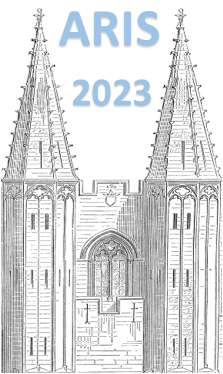Orateur
Description
The $N=20$ "island of inversion" is a neutron-rich region of the nuclear chart which is of particular importance for understanding the evolution of nuclear structure. In this region, deformed intruder configurations (particle-hole excitations) dominate at ground-state and low-excitation energies which is facilitated by the weakening of the $N=20$ shell closure. Additionally this shell gap weakens as protons are removed, leading to a new shell closure emerging at $N=16$, which produces doubly-magic properties in $^{24}$O.
The magnesium isotopes exhibit a swift transition into the island between $^{30}$Mg and $^{31}$Mg, and thus are a useful measure of how single-particle structure evolves into the island. Data on isotopes in this region can be used to test the validity of current nuclear models, and be used to further refine them for other nuclei in the island.
The ISOLDE Solenoidal Spectrometer (ISS) collaboration published results on the nuclear structure of $^{29}$Mg recently [1], measuring its neutron occupancies from the $d$($^{28}$Mg,$p$)$^{29}$Mg reaction (9.47 MeV/u) performed before CERN's long shutdown. An analagous $d$($^{30}$Mg,$p$)$^{31}$Mg reaction (8.52 MeV/u) has been performed at the ISS to examine the neutron occupancies of $^{31}$Mg, which can be compared to the measurement of $^{29}$Mg to understand this transition into the island. This measurement was performed with a new on-axis silicon developed specifically for ISS. Preliminary results from this new measurement will be presented, with reference to the previous measurement on $^{29}$Mg.
[1] P. T. MacGregor et al., Phys. Rev. C 104, L051301, Nov 2021

